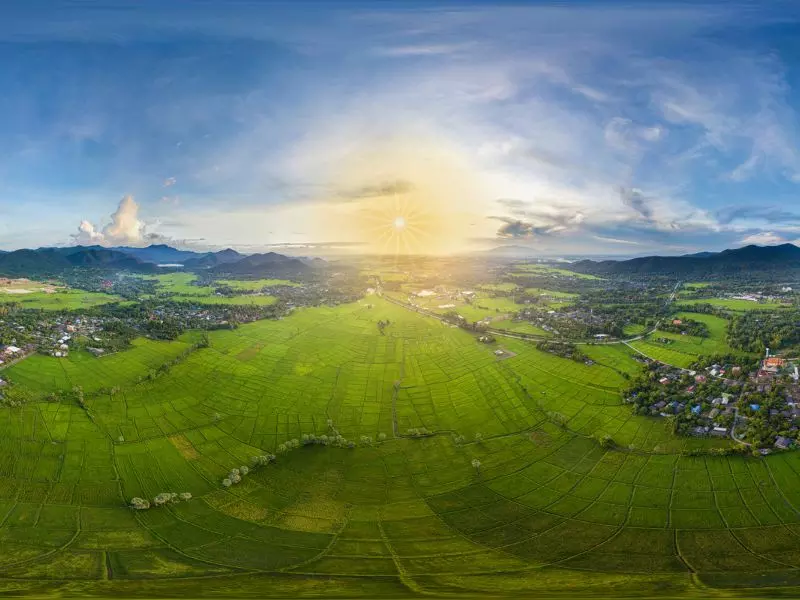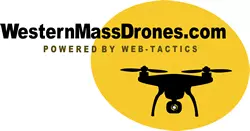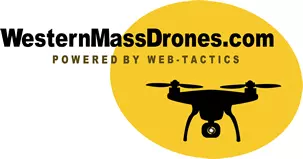The Rise of 360-Degree Cameras in Drone Photography

360-degree cameras, as their name suggests, allow for a full-circle view of the surrounding environment. When attached to drones, these cameras elevate the capabilities of these flying machines, enabling them to capture images and videos that were previously impossible. Imagine a bird's eye view, not just in a linear field but with a complete all-around perspective. That's the essence of 360-degree drone photography.
This trend is significant for several reasons. It opens up new possibilities for content creation, with applications in fields ranging from real estate and tourism to filmmaking and beyond. Additionally, it represents a significant leap forward in how we approach aerial imaging, enhancing the immersive experience for viewers and providing a more comprehensive understanding of the filmed environment.
As we delve deeper into the age of advanced drone technology, the rise of 360-degree cameras on drones is a development worth watching. This article will explore the technology behind these cameras, their varied use cases, and their potential to shape the future of drone photography. Strap in and prepare for a panoramic journey into the world of 360-degree drone photography!
What are 360-Degree Cameras?
360-degree cameras, as the name suggests, are designed to capture an entire 360-degree field of view. Unlike traditional cameras that capture a specific frame, 360-degree cameras can record everything around them. This feat is achieved using two back-to-back fish-eye lenses, each capturing a 180-degree view. The images from both lenses are then stitched together to create a single, seamless 360-degree image.
Now, imagine attaching such a camera to a drone. Ground-level perspectives no longer constrain the camera and can capture a fully immersive, 360-degree panorama from the air. This capability makes pairing 360-degree cameras and drones unique and powerful.
Let's delve into the benefits of using a 360-degree camera on a drone:
Unparalleled Field of View:
The primary advantage is the ability to capture a full 360-degree panorama, giving viewers a complete view of the surroundings from a unique aerial perspective, which is especially useful for landscapes, property showcases, and large-scale events.
Immersive Viewing Experience:
A 360-degree camera can create a highly immersive experience, especially when the footage is viewed with virtual reality (VR) devices. This allows viewers to explore the scene in all directions as if they were there, dramatically enhancing the viewing experience.
Post-Production Flexibility:
With 360-degree footage, you can choose the viewing direction in post-production, meaning you can highlight different parts of the scene without worrying about missing anything during the shoot.
Interactive Content:
360-degree footage allows for interactive content, where viewers can control their view of the scene. This interactive nature can increase viewer engagement, making it a valuable tool for content creators and marketers.
Unique Perspectives:
Traditional drone footage is limited by the direction the drone is facing. With a 360-degree camera, you can capture unique perspectives and creative shots that wouldn't be possible with a regular drone camera.
Use Cases of 360-Degree Cameras on Drones
Real Estate Photography
360-degree drone photography has revolutionized the real estate industry, offering a unique perspective that traditional photography can't capture. This technology enables real estate agents to showcase properties in their entirety, providing potential buyers with an immersive and comprehensive view of the property.
With a 360-degree camera, drones can capture sweeping views of the property, including the home, the yard, the neighborhood, and surrounding areas. These images can be stitched together to create a virtual tour, allowing potential buyers to "walk" through the property from their homes. One real-world example of this application is the work done by real estate agencies like Sotheby's International Realty. They've incorporated 360-degree drone footage into their listings, providing virtual tours of their luxury properties and enhancing the online home-buying experience.
Travel Blogging
For travel bloggers, capturing the essence of a destination can be challenging. However, 360-degree drone photography has made it possible to create content that genuinely immerses readers.
Drone photography allows travel bloggers to capture panoramic views of landscapes, landmarks, and cultural events, transporting their audience to the heart of the destination. These images can be shared through blogs, social media, or virtual reality platforms for an even more immersive experience. A great example of this is the work of travel blogger Johnny FPV. Known for his stunning drone footage, he has used 360-degree drone photography to capture the beauty of locations worldwide, providing his followers a unique perspective on his travels.
Filmmaking
In filmmaking, 360-degree drone footage provides filmmakers with an entirely new set of tools for storytelling. These cameras can capture sweeping panoramic shots, aerial views, and unique perspectives that can add depth and dimension to a film.
Moreover, these shots can be particularly effective in action sequences, nature documentaries, or any scene that aims to immerse the viewer in the film's environment. Showing a location from all angles adds realism and immersion that traditional cameras can't match.
The film "The Lion King" (2019) shows an example of this in practice. The filmmakers used 360-degree drone footage to capture the vast landscapes of the African savannah, enhancing the film's visual storytelling and providing viewers with an immersive cinematic experience. In all these cases, 360-degree drone photography is more than just a trend; it's an innovative tool that is changing how we capture and share our world.
The Future of 360-Degree Cameras on Drones
The future of 360-degree camera technology and its application in drones is exciting and promising. This is a field where rapid technological advancements meet an ever-increasing demand for high-quality, immersive content.
One of the key advancements we can expect to see is an increase in the resolution of 360-degree cameras. While current cameras offer impressive visuals, the next generation will push these boundaries further. With 8K resolution already available on some models, it wouldn't be a surprise to see 16K cameras in the future providing unprecedented detail, creating an even more immersive viewing experience.
Moreover, we can anticipate enhancements in the software that stitches the images from the 360-degree cameras together. As this software becomes more sophisticated, we can expect seamless panoramic images virtually indistinguishable from reality. This ability will enable drone operators to create truly immersive virtual reality experiences.
Beyond image quality and stitching software, we may also see advancements in integrating artificial intelligence and machine learning with 360-degree cameras and drone photography. AI could automate certain features, like tracking subjects or recognizing and enhancing essential elements in the camera's field of view, which could simplify the process of shooting and editing footage, allowing even amateur drone operators to create professional-quality videos.
As for the future applications of 360-degree cameras on drones, we foresee their use expanding into numerous industries. For example, in environmental science, these cameras could be used to create immersive documentaries showcasing natural phenomena or areas impacted by climate change. In sports, they could provide unique perspectives during games or training sessions, giving viewers an experience similar to being on the field with the players. The applications in tourism are also vast, with the potential for virtual reality tours of landmarks or natural wonders.
Conclusion
In conclusion, the emergence of 360-degree cameras in drone photography marks a significant leap forward in our ability to capture and share our world. Whether you're a real estate agent showcasing properties, a travel blogger documenting exotic locations, or a filmmaker seeking unique perspectives, this technology offers a level of immersion and engagement that was previously unimaginable. As we look to the future, we can expect further advancements in this technology, opening up new possibilities for storytelling and exploration. The sky is truly the limit when it comes to 360-degree drone photography.

